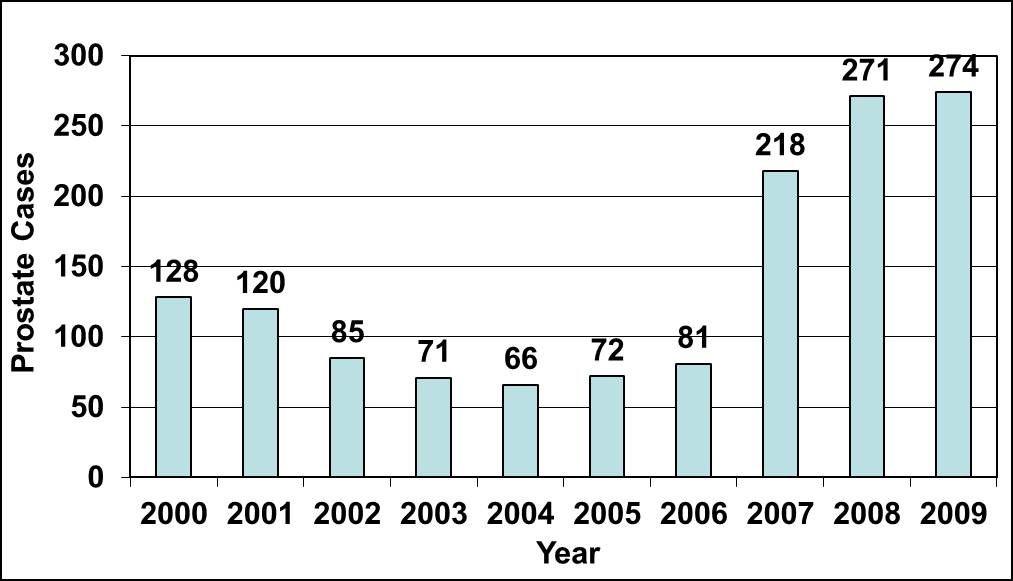|
Back to Annual Meeting Program
Contemporary Analysis of Post-Prostatectomy Specimens In A Large Volume RALRP Program Reveals A Paradoxical Stage Migration Toward More Aggressive Disease
Michael Maddox, MD, Simone Thavaseelan, MD, Anthony Mega, MD, Gyan Pareek, MD, Joseph Renzulli, III, MD.
Brown University, Providence, RI, USA.
BACKGROUND:
As a result PSA screening, there is concern for over diagnosis and treatment of low risk prostate cancer. With the widespread use of robot-assisted laparoscopic radical prostatectomy (RALRP), a stage migration to less aggressive prostate cancer may be expected in pathological specimens. As our robotic experience has matured, we sought to analyze our database for possible stage migration.
METHODS:
A total of 262 patients who underwent OP from 2004 to 2006 and 545 patients who underwent RALRP from 2007 to 2011 were identified from an IRB approved prospective database accrued by an independent third party committee. Demographic data, pathology, positive margin rates along with standard prostate cancer reporting data were tabulated. The two groups were compared with regards to percentage of cases performed stratified by Gleason grade. Statistical significance was calculated using the Chi square test.
RESULTS:
The number of prostate cancer cases managed at our institution increased considerably after the introduction of robotics in 2007(figure 1). The distributions of gleason grade for OP versus RALRP are shown in table 1. Overall, there was a significant decrease in the patients with Gleason 6 prostate cancer undergoing RALRP as compared to open prostatectomy (p=0.0001). In addition, RALRP was performed on a significantly greater percentage of Gleason 7 disease (p<0.0001).
CONCLUSIONS:
Recent studies suggest there is an increase in treatment of indolent prostate cancer resulting in increased cost and morbidity. In our experience, the percentage of RALRP versus OP cases, stratified by Gleason score, demonstrated a decrease in RALRP for low risk disease and increase in intermediate risk. Our data suggests that RALRP has led to an increase in surgery for higher grade disease while increasing our population of active surveillance patients.
Surgical Approach Stratified by Gleason Grade | RALRP | OP | Statistical Significance (p) | | Gleason 6 (%) | 38.7 | 52.3 | 0.0001 | | Gleason 7 (%) | 56.2 | 40.9 | < 0.0001 | | Gleason 8 (%) | 3.5 | 2.5 | 0.224 |

Back to Annual Meeting Program
|